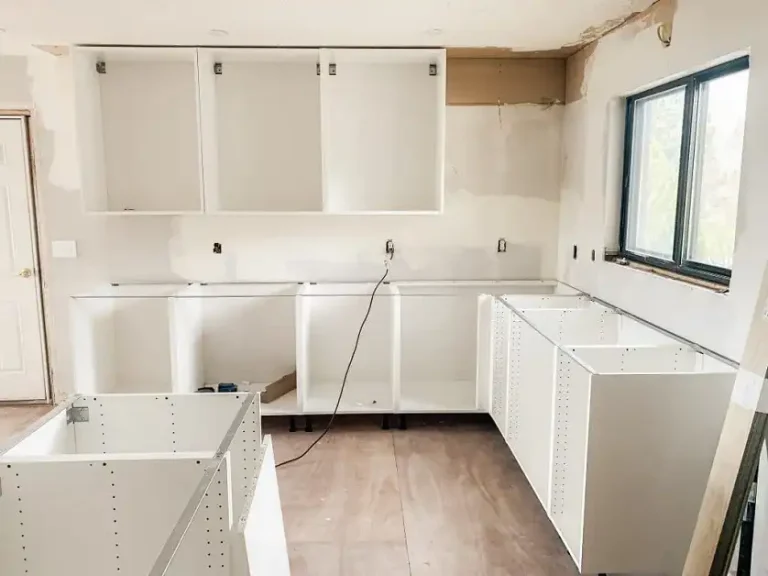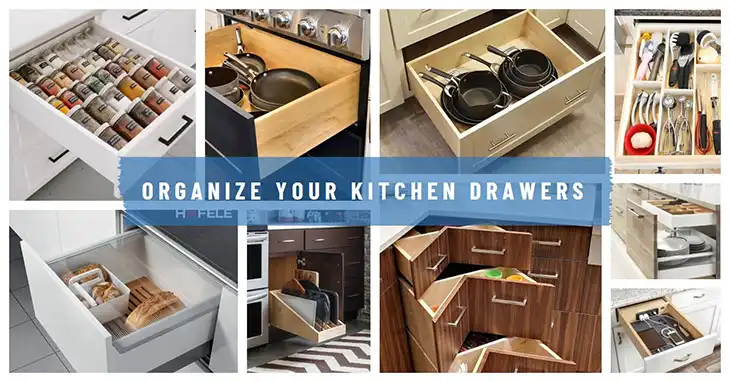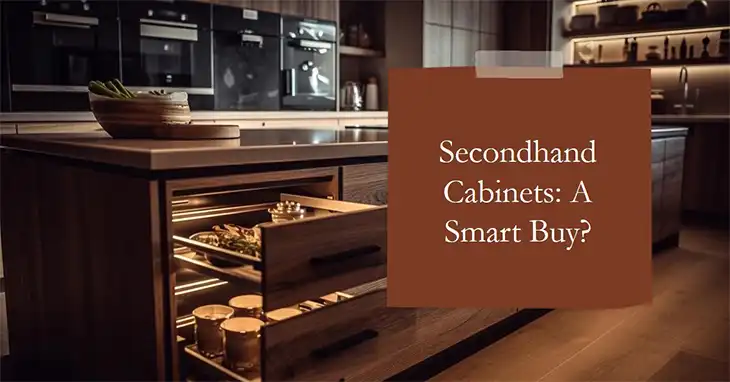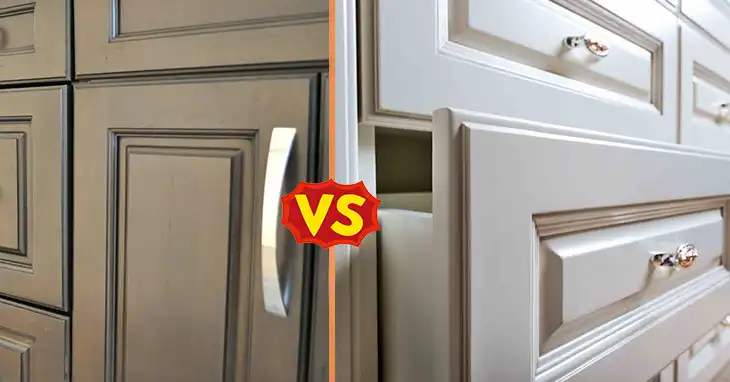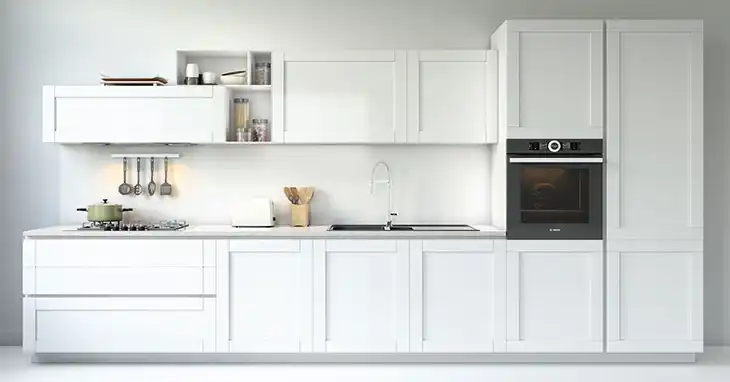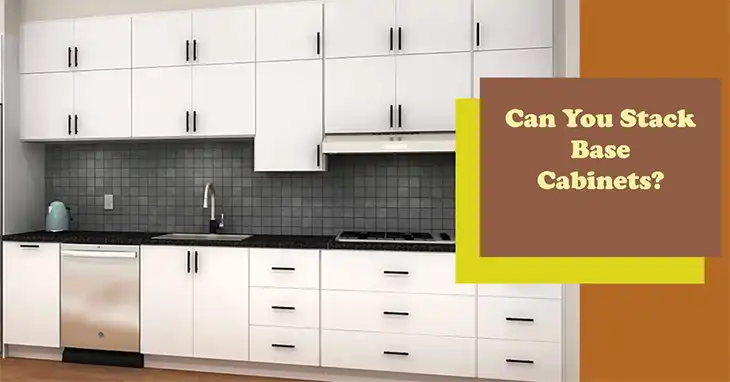Frameless vs Face Frame Cabinets
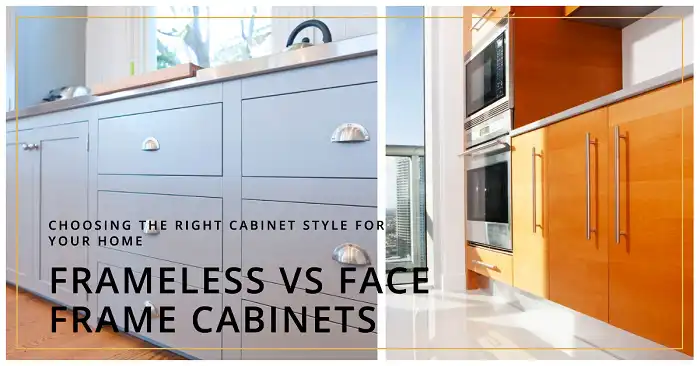
Frameless cabinets, often called European-style cabinets, have a sleek, modern appearance. They lack a frame at the front of the cabinet box, allowing for a seamless look and maximized interior space. On the other hand, face frame cabinets, the traditional American style, feature a frame attached to the front of the cabinet box, providing structural support and a classic aesthetic.
The choice between these two styles can significantly affect your kitchen’s look, storage capacity, and even your budget. With that being said, let’s now take a look at the differences between the two to help you choose which one you should go with.
What Are Frameless Cabinets
Frameless cabinets are built without a face frame, resulting in a clean, contemporary look. The cabinet doors attach directly to the sides of the cabinet box, creating a seamless appearance when closed. This construction method allows for full access to the cabinet interior, maximizing storage space.

Picture: Frameless cabinet diagram
Typically, frameless cabinets use full-overlay doors that completely cover the cabinet box edges. This design choice contributes to their modern, streamlined aesthetic. Manufacturers often use engineered materials like medium-density fiberboard (MDF), particleboard, or plywood for the cabinet boxes, finished with durable laminates, thermofoils, or wood veneers.
Advantages of Frameless Cabinets
Without a face frame, frameless cabinets offer about 10% more storage space than their face frame counterparts. Furthermore, the sleek, handle-free look (when using touch-latch mechanisms) suits contemporary kitchen designs.
Also, the absence of a frame means there are fewer nooks and crannies and therefore it’s easier to clean and maintain.
Disadvantages of Frameless Cabinets
Generally, frameless cabinets are more expensive due to their construction complexity and hardware requirements. Also, without a face frame, lower-quality materials may lead to reduced structural integrity over time.
Finally, assembling frameless cabinets is not for most DIY enthusiasts, as they require more precise alignment and therefore are difficult to accomplish.
What Are Face Frame Cabinets
Face frame cabinets feature a frame made of horizontal rails and vertical stiles attached to the front of the cabinet box. This frame provides structural support and allows for various door mounting options, including inset, partial overlay, and full overlay.

Picture: Face frame cabinet diagram
Typically constructed from solid wood, face frame cabinets offer a wide range of design possibilities. The frame itself can be a design element, particularly in partial overlay or inset door styles where it remains visible.
Advantages of Face Frame Cabinets
These are generally less expensive than frameless cabinets, making them budget-friendly. Also, due to the frames’ added rigidity, these are generally more durable.
When you go with frames, there are more design and style options, suitable for both traditional and modern designs. These are easier to install since the face frame can hide small imperfections in installation and attachment.
Disadvantages of Face Frame Cabinets
Due to the frames, face frame cabinets may offer slightly reduced interior space. Also the accessibility is sometimes limited because the drawer glides may not extend fully due to the face frames.
Finally, these offer a more traditional look, which might seem outdated in modern homes and kitchen designs.
Frameless vs Face Frame Cabinets
Here’s a side-by-side comparison between the two:
| Feature | Frameless Cabinets | Face Frame Cabinets |
| Aesthetic | Modern, sleek | Traditional, classic |
| Storage Space | Maximized (about 10% more) | Slightly reduced due to frame |
| Cost | Generally higher | Usually more affordable |
| Structural Stability | Depends on material quality | Generally more stable |
| Installation | Requires precise alignment | More forgiving |
| Design Flexibility | Limited to modern styles | Suits various styles |
| Drawer Access | Full extension is easier to implement | May be limited by the face frame |
| Cleaning | Easier due to fewer crevices | More nooks to clean |
| Door Styles | Typically full overlay | Inset, partial overlay, full overlay |
How to Make the Right Choice for Your Kitchen
The decision between frameless and face frame cabinets should be guided by several key factors.
Style
Consider the overall style of your kitchen. If you’re aiming for a modern, minimalist look, frameless cabinets would be an excellent choice. Their sleek lines and handle-free options can create a streamlined, contemporary feel. On the other hand, if your kitchen leans towards a traditional or transitional style, face frame cabinets might be more appropriate, offering classic appeal and versatility in design.
Budget
Budget considerations often play a significant role in kitchen renovations. If cost is a primary concern, face frame cabinets generally offer a more affordable option. However, it’s important to balance cost with your specific needs and long-term satisfaction.
Capacity
Storage capacity is another crucial factor. If maximizing every inch of storage space is essential for your kitchen, frameless cabinets have a slight edge, offering about 10% more usable space. However, the difference may be negligible depending on your specific storage needs.
Durability
Durability is a long-term consideration that shouldn’t be overlooked. While face frame cabinets are often perceived as more durable due to their additional structural support, high-quality frameless cabinets can be equally long-lasting. The key lies in the quality of materials and construction rather than the cabinet style itself.
Remember to consider your entire kitchen when making your decision. Think about how the cabinets will integrate with other elements like countertops, backsplashes, and appliances. A cohesive design will create a more harmonious and visually appealing kitchen.
Final Words
Both frameless and face frame cabinets have their merits, and the best choice depends on your specific needs, preferences, and budget. Frameless cabinets offer a modern look and maximized storage, while face frame cabinets provide classic appeal and potential cost savings. By carefully considering these factors and seeking expert advice when needed, you can make a decision that will result in a kitchen you’ll love for years to come.
Frequently Asked Questions
Are IKEA cabinets framed or frameless?
IKEA cabinets are frameless. They follow the European-style cabinet design, which aligns with their modern, Scandinavian aesthetic. This design choice contributes to IKEA’s reputation for sleek, contemporary kitchen solutions.
What is another name for frameless cabinets?
Frameless cabinets are often referred to as “European-style” cabinets. This name stems from their popularity in European kitchen design. They’re also sometimes called “full-access” cabinets due to the absence of a face frame, which allows for greater interior access.
Why are frameless cabinets harder to install?
Frameless cabinets are more challenging to install because they require precise alignment. Without a face frame to provide some forgiveness in installation, each cabinet must be perfectly level and plumb. The doors and drawers in frameless cabinets are designed with minimal gaps, leaving little room for error. This precision requirement often makes professional installation advisable for frameless cabinets.
What is the most timeless kitchen cabinet style?
Shaker-style cabinets are often considered the most timeless. Their simple, clean lines and versatile design allow them to complement both traditional and modern kitchens. Shaker cabinets can be found in both framed and frameless designs, offering flexibility in terms of overall kitchen style.

